This permanent gallery explores trust, identity and health in a changing world.
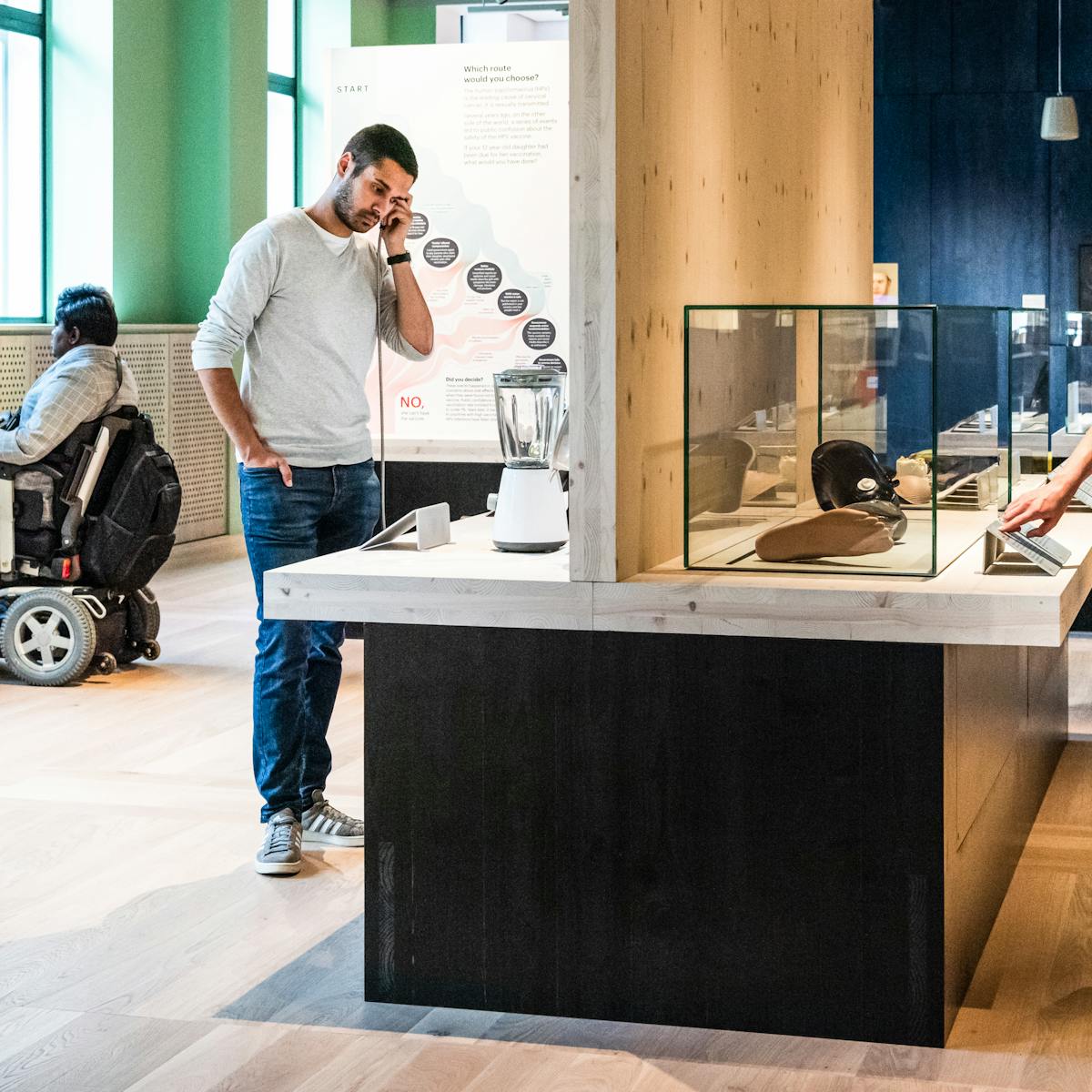
At every turn the visitor will find something to fascinate.
Being Human explores what it means to be human in the 21st century. It reflects our hopes and fears about new forms of medical knowledge, and our changing relationships with ourselves, each other and the world.
Featuring 50 artworks and objects, the gallery is divided into four sections: Genetics, Minds & Bodies, Infection, and Environmental Breakdown. Discover a refugee astronaut carrying their belongings to an unknown destination, sniff a perfumed bronze sculpture that smells of breast milk and listen to an epidemic jukebox.
Exhibition highlights
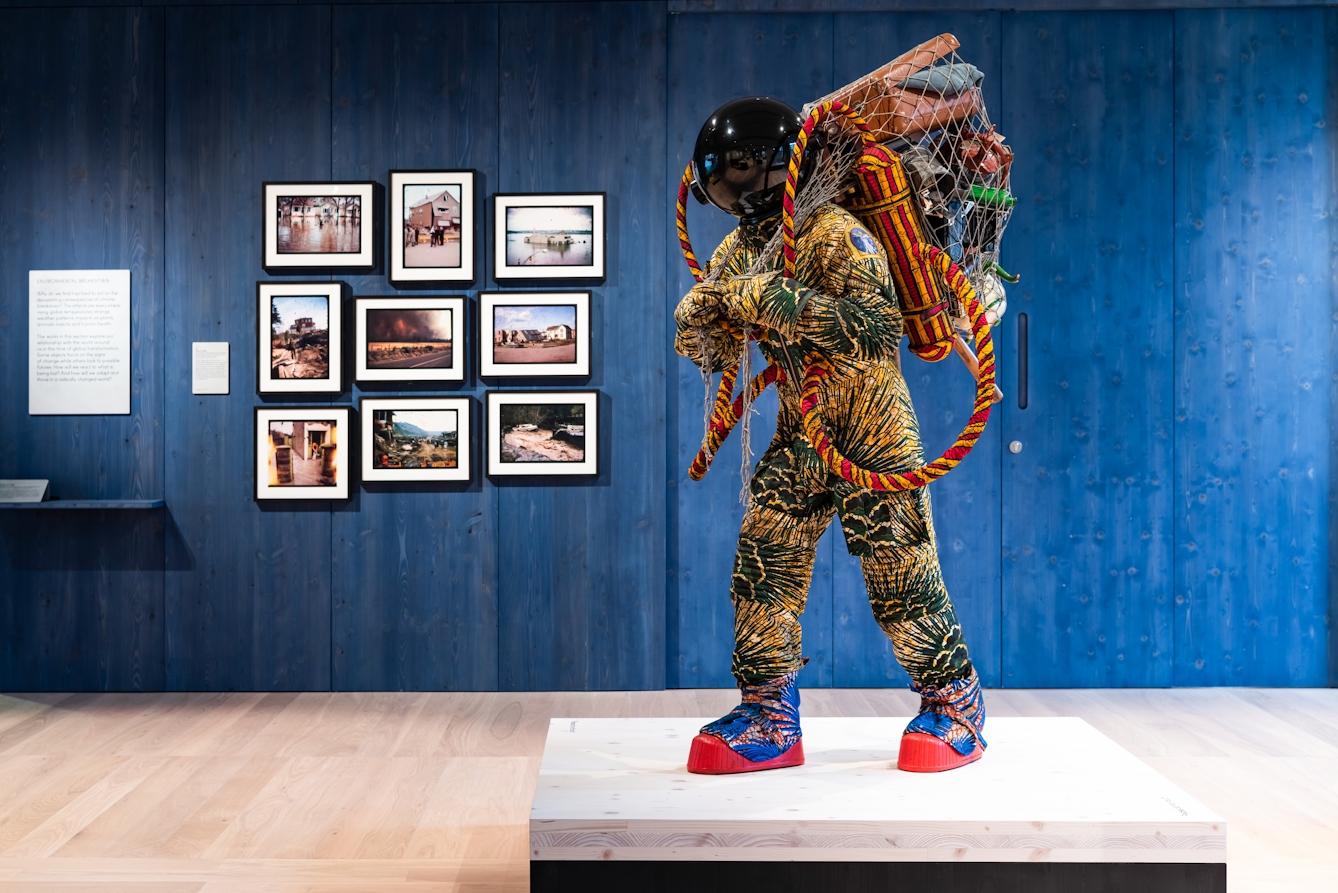
Yinka Shonibare’s ‘Refugee Astronaut’ encourages us to ask questions: who are they? Why have they had to leave earth in such a hurry? If you look closely at the possessions on their back you can find books, photographs and intriguing objects: a telescope, a camera, even a frying pan.
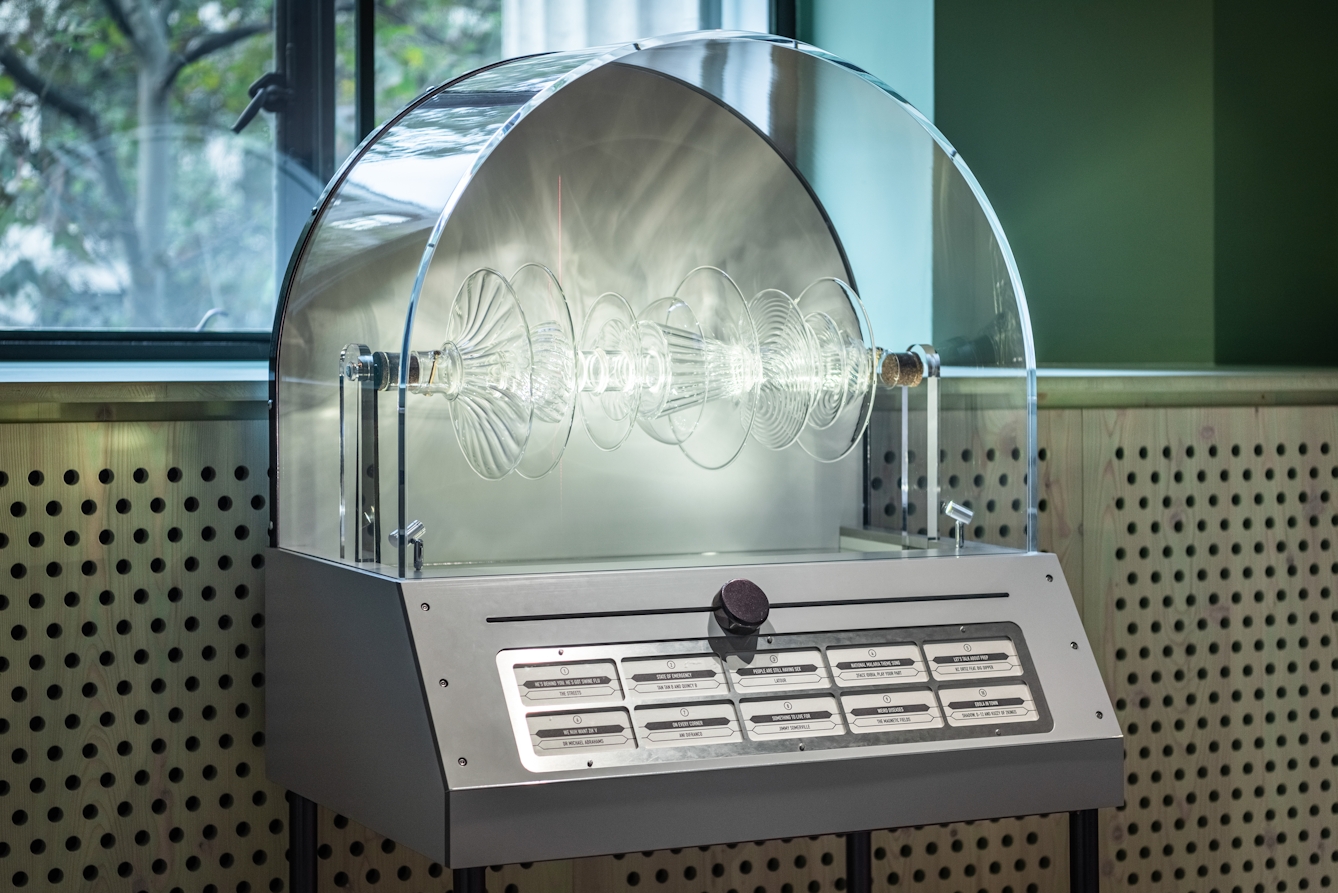
This interactive jukebox is loaded with songs from around the world relating to illness and epidemics. You can listen to hits like ‘Let’s Talk about PrEP’ (PrEP is pre-exposure prophylaxis for HIV) and ‘Ebola in Town’. Each track lights up and designers Kin worked with Bethan Laura Wood to include a rotating glass sculpture.
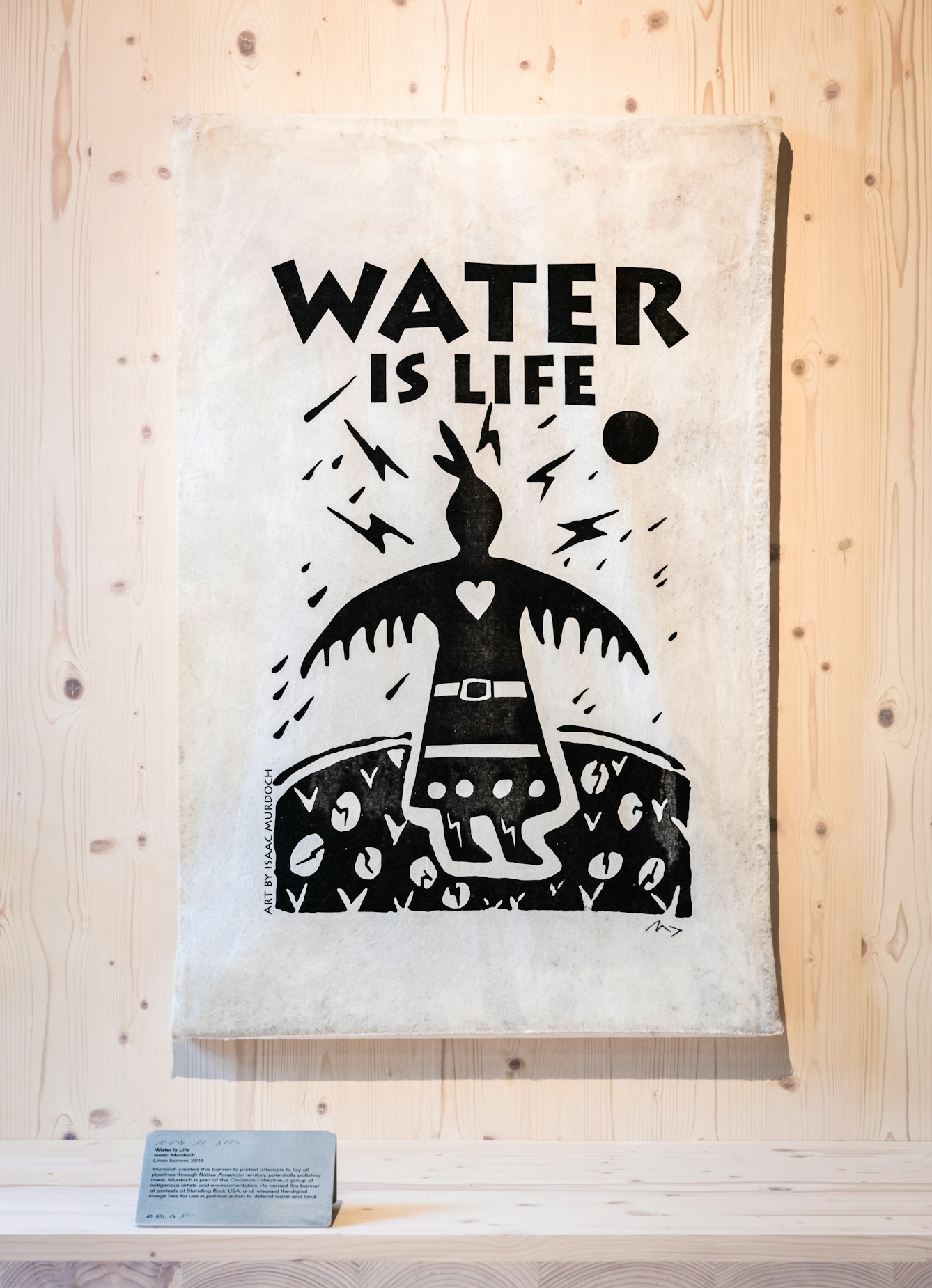
Artist Isaac Murdoch designed and carried this banner at the Standing Rock Protest against the Dakota Access Pipeline. Murdoch is a member of Onaman Collective, a group of indigenous artists and environmentalists, and has shared the banner designs for other people to use in similar protests.
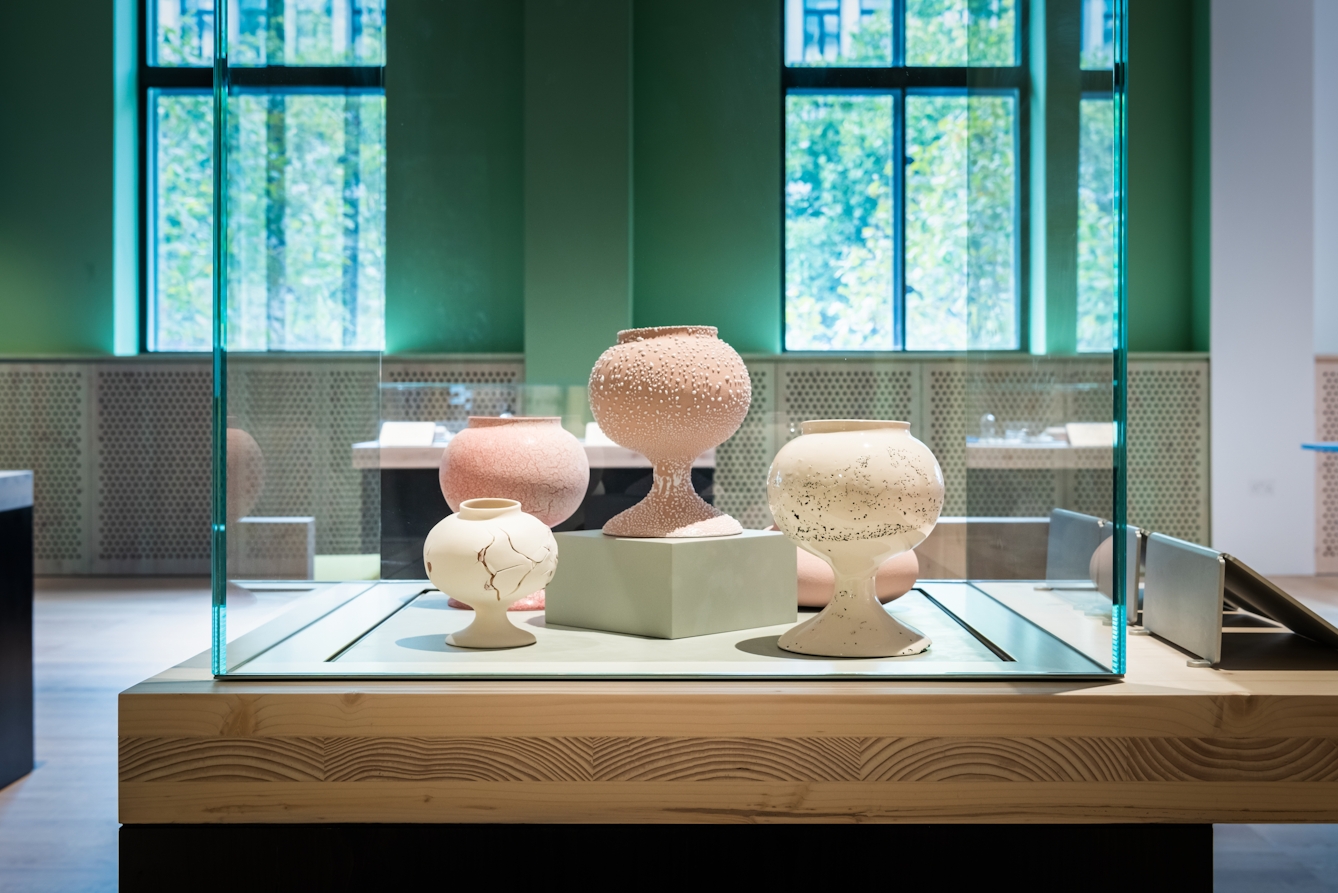
Just as you might inherit a precious family vase, you might also inherit the family tendency to acne or osteoporosis. Artist Tamsin Van Essen created these ‘Medical Heirlooms’ as a tribute to our medical heritage. Each is unique and each is beautiful.
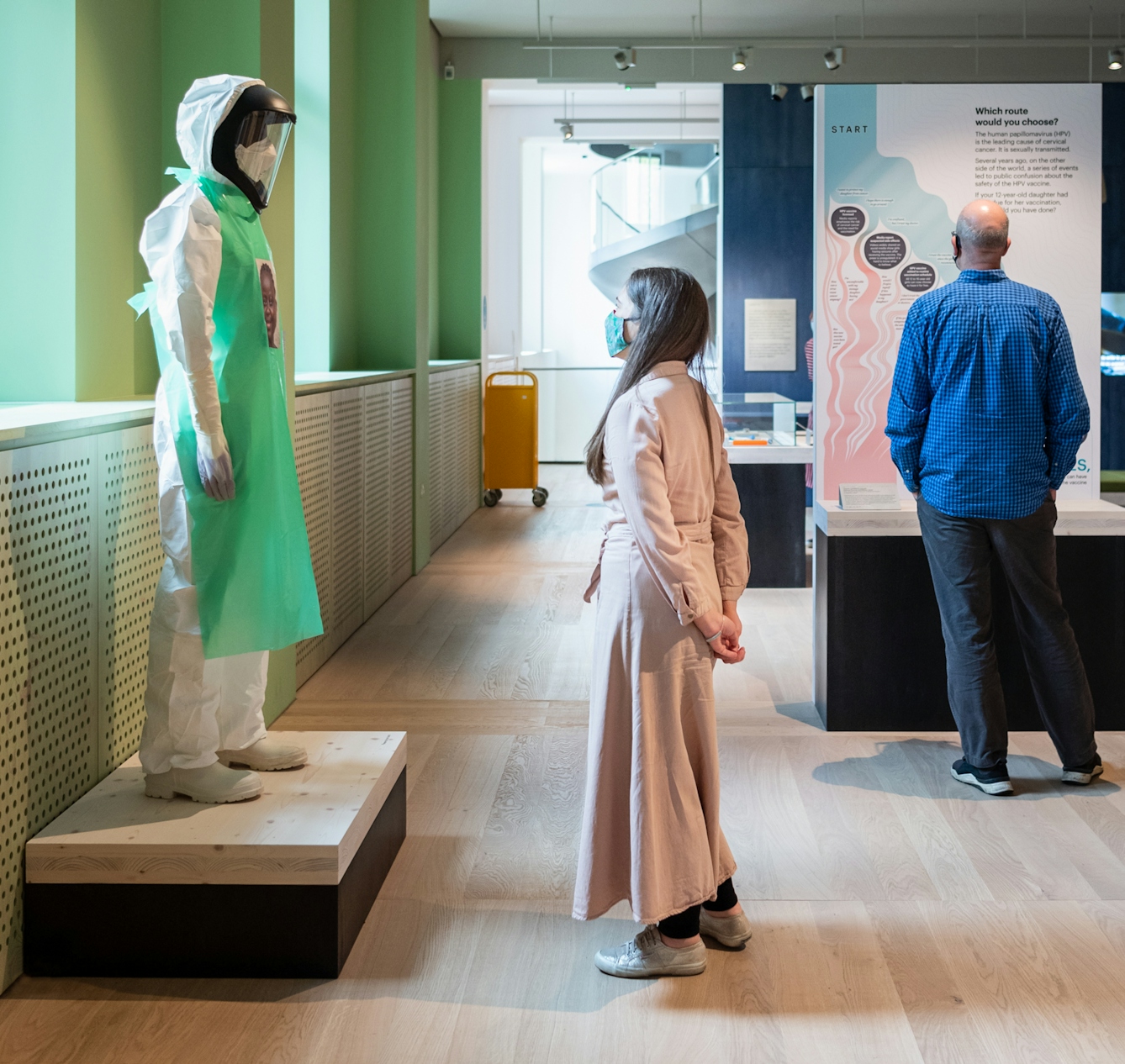
In an Ebola epidemic, a hazmat suit offers crucial protection but looks terrifying to patients. For ‘PPE Portrait Project’, artist Mary Beth Heffernan used photographed stickers to give a face back to healthcare workers at two treatment centres. Next to this re-creation you can read stories about how this changed patient care.
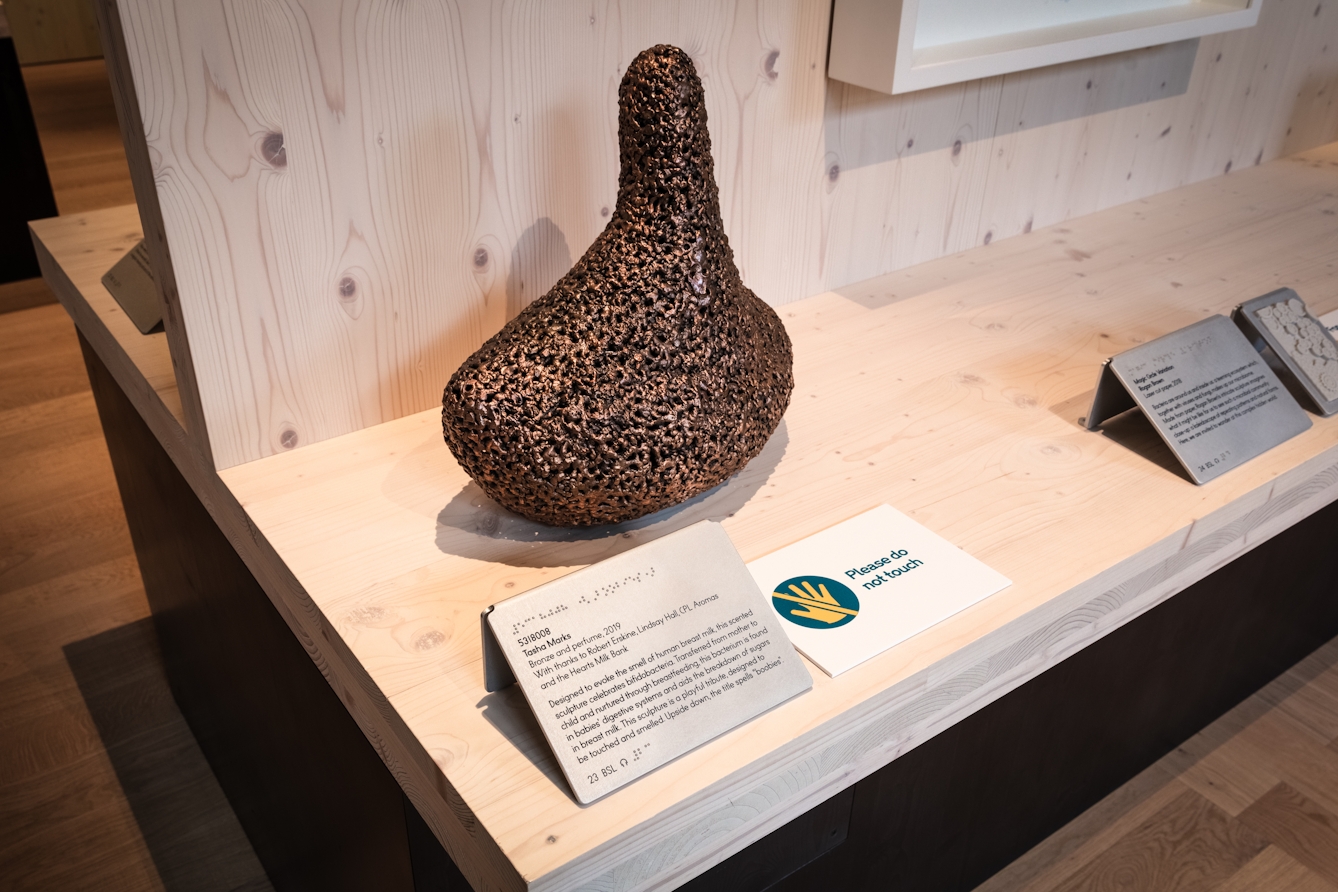
This sculpture holds a secret – lean in and sniff and you will smell breast milk. Designed by Tasha Marks of AVM Curiosities, ‘5318008’ is a playful tribute to our intimate relationship with bacteria. The title is a joke – turn the numbers upside down to read ‘BOOBIES’.
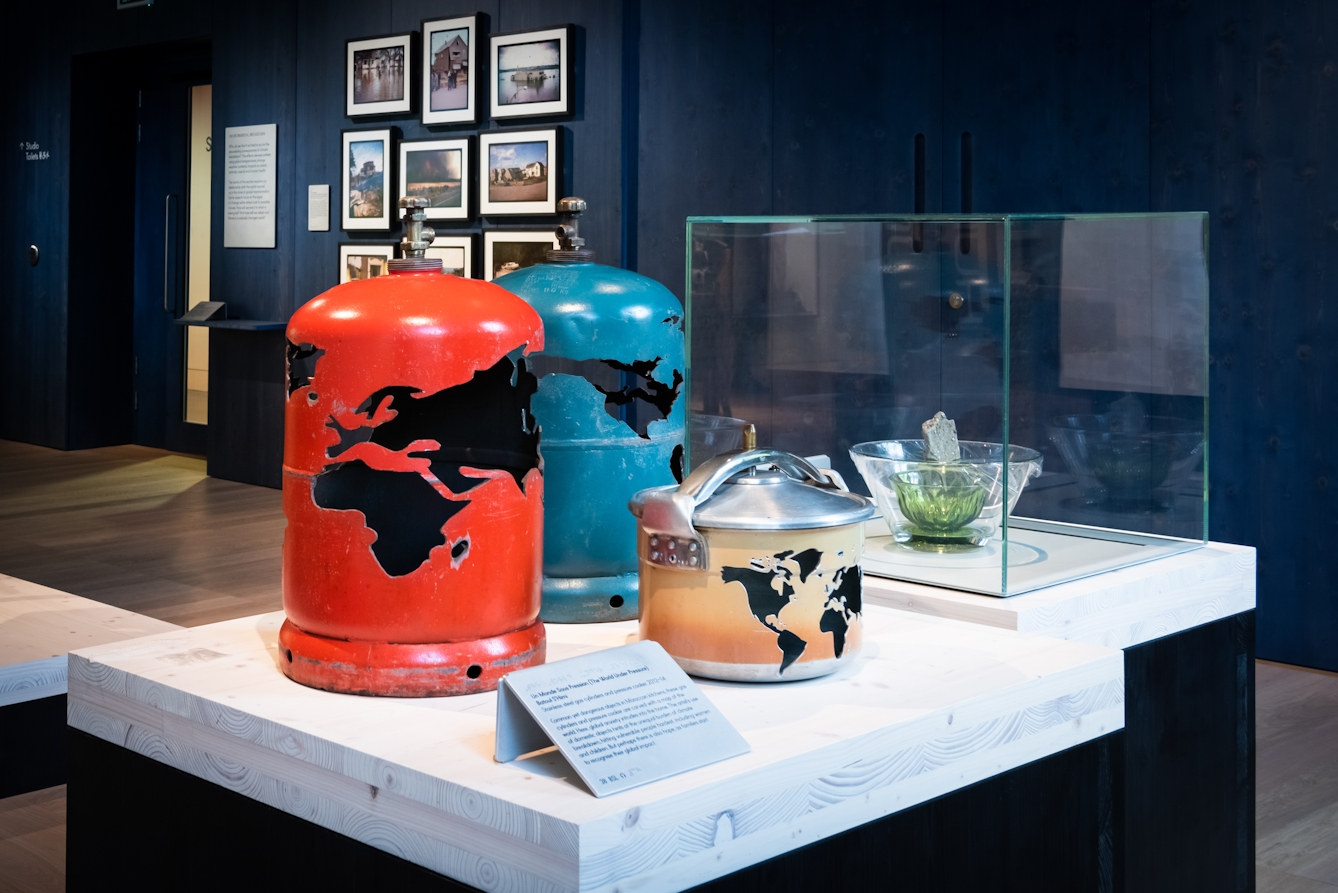
Carving a map into these pressurised containers reduces the danger of an explosion but reminds us of global threats such as environmental breakdown. Titled ‘The World Under Pressure’, Batoul S’Himi’s domestic objects encourage us to think about our impact on the world.
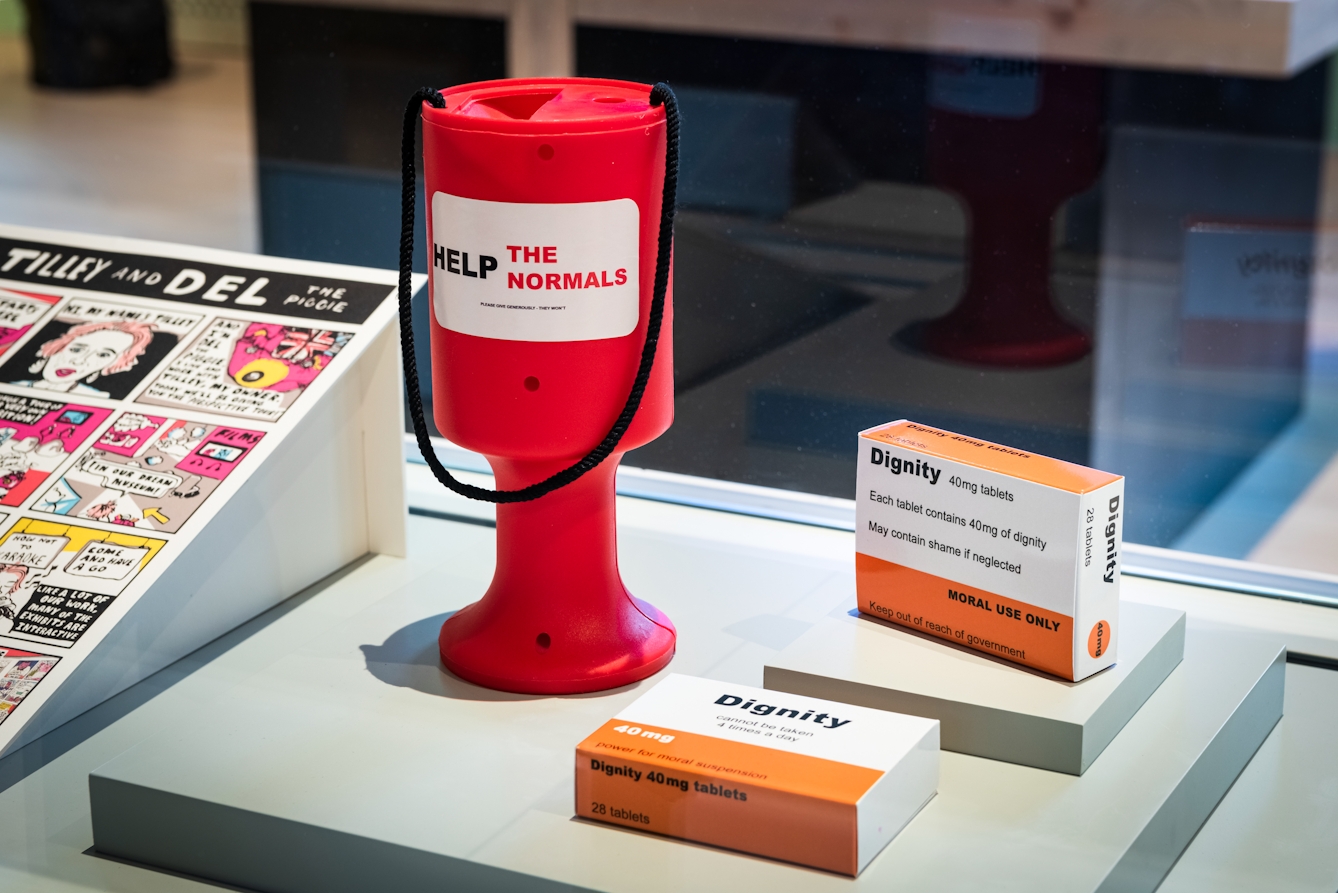
Look closely at this pillbox and collecting tin and you might be surprised. The tin’s supposed charity is ‘Help the Normals’. In tiny letters, it explains ‘Give generously – they won’t’. The ‘Dignity’ pillboxes also feature thought-provoking instructions. Dolly Sen created these objects as a protest that encourages us to shift our perspectives on disability.
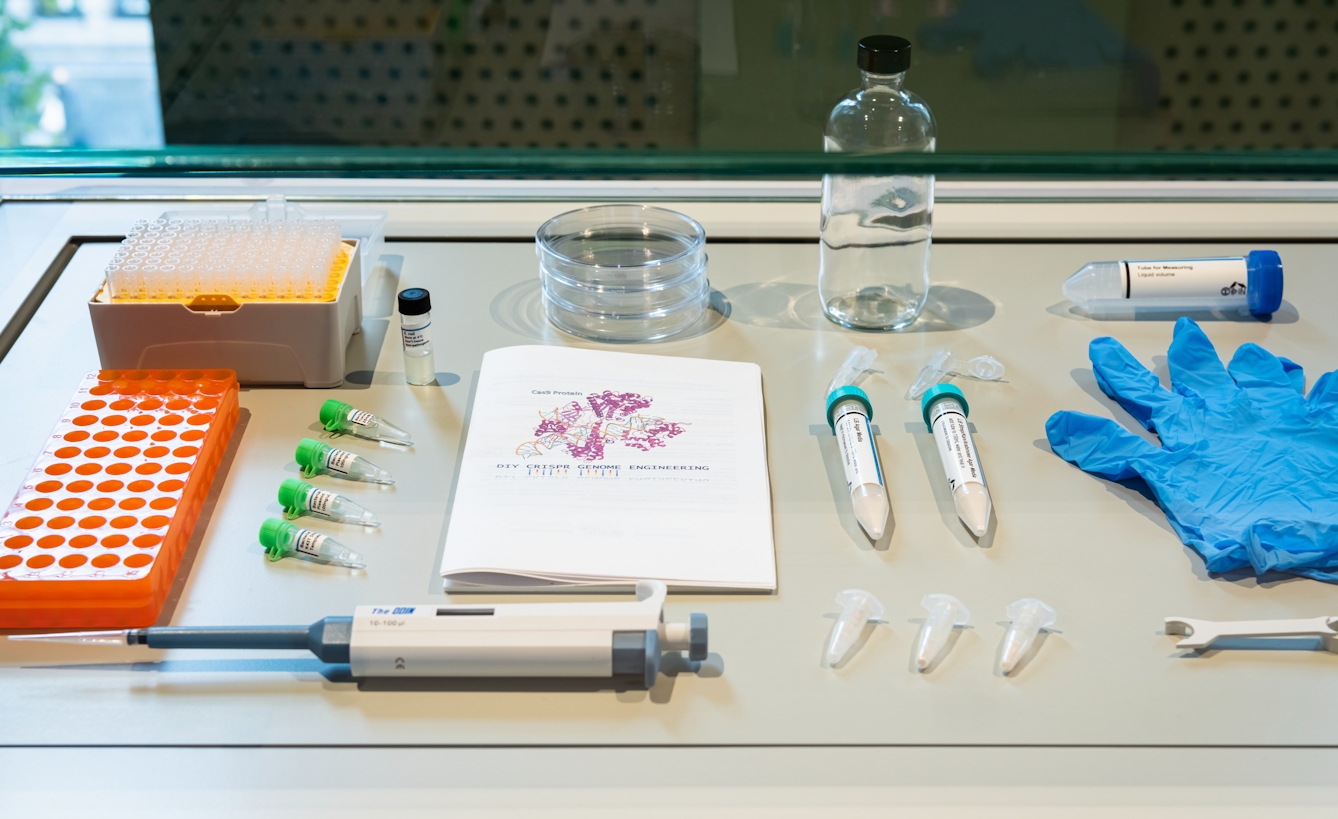
Don’t try this at home! This kit claims to include everything you would need to edit DNA.
Gallery captions and audio description
- A complete set of gallery captions is available to read online.
- Recorded audio descriptions of every exhibit and a highlights tour are available on the VocalEyes website.
In addition, this visual story explains how to get to Wellcome Collection, and what to expect from our ‘Being Human’ exhibition.
Visit us
Free admission
Galleries open Tuesday–Sunday, Opening times
Being Human gallery, level 1
Step-free access is available to all floors of the building
Large-print guides, transcripts and magnifiers are available in the gallery
For more information, please visit our Accessibility page. If you have any queries about accessibility, please email us at access@wellcomecollection.org or call 0 2 0. 7 6 1 1. 2 2 2 2